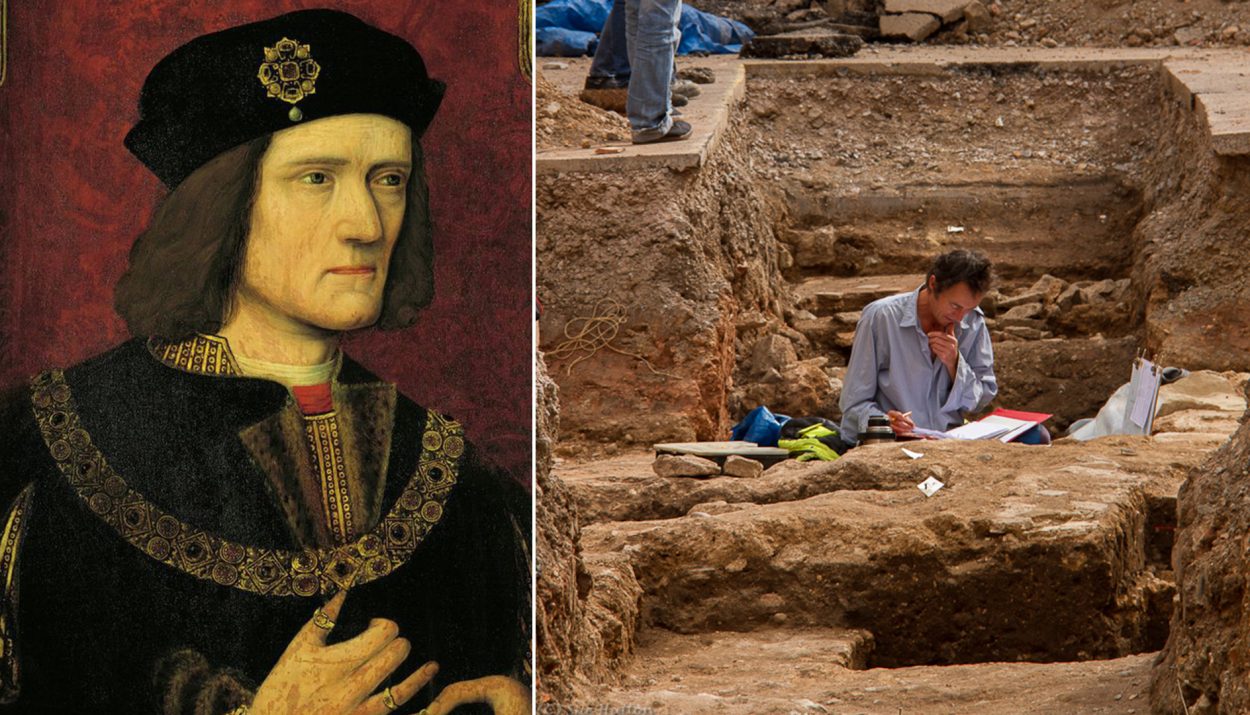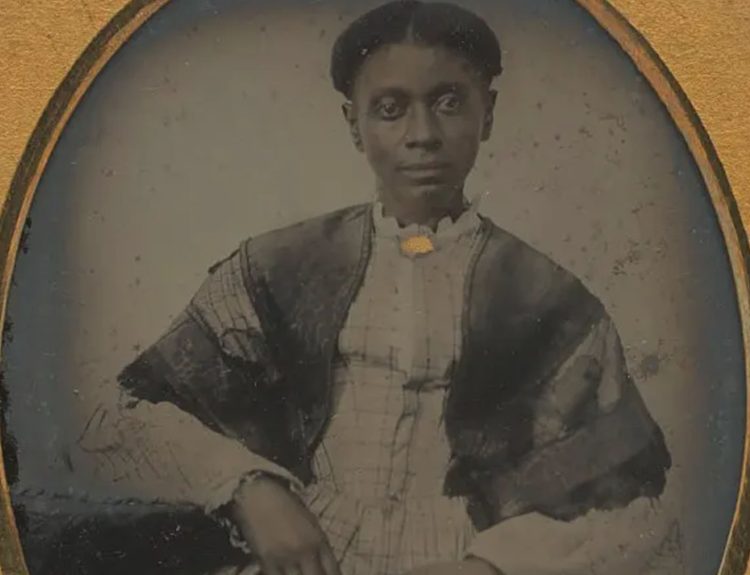More than 500 years after his death in battle, the skeletal remains of England’s ruthless King Richard III were finally found in an unlikely spot after being lost to time. The discovery of the unmarked grave came about thanks to the exhaustive efforts of an amateur researcher and Richard III fan girl who spearheaded the archaeological find.
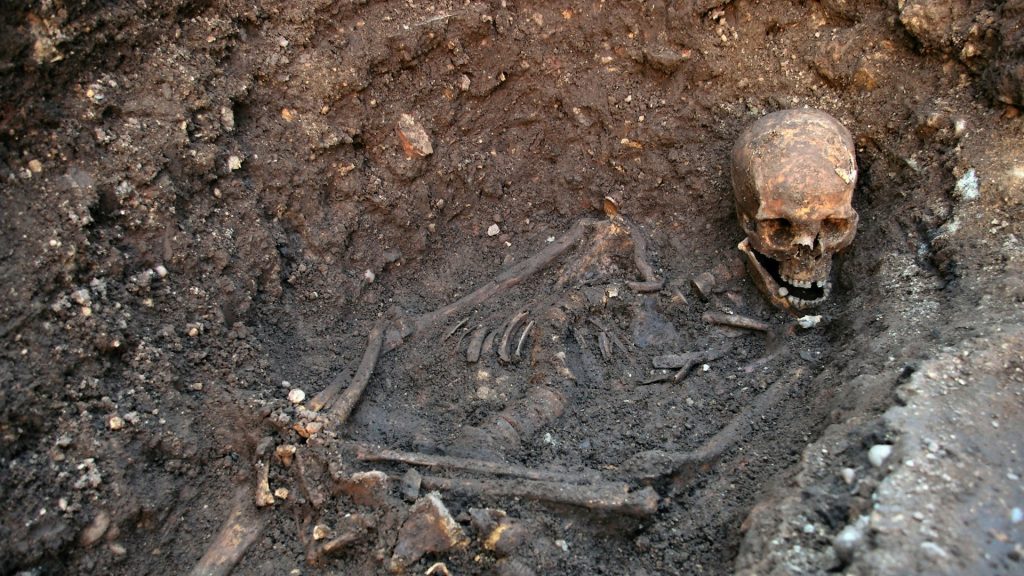
In life, Richard III was vilified. In fact, he ranks among history’s most hated, most heartless rulers. When he was killed in the Battle of Bosworth Field on August 22, 1485, there weren’t too many people mourning his passing. His death, in reality, put an end to the reign of the House of York, resolved his own personal game of thrones, and kicked off the start of the Tudor era. Was Richard III’s unsavory reputation the reason why his graveside became lost to history? To answer this question and learn why it took more than 500 years to finally locate his remains, we need to first understand the dastardly deeds of King Richard III.
Jostling for the Crown
When Richard was born on October 2, 1452, England was entering a prolonged period of civil turmoil as different elite families jostled for the crown. As child number eleven of twelve in his family, born to Richard, 3rd Duke of York, and his wife, Cecily Neville, Richard III had little hope that he would end up with the crown on his head, even though his father had a legitimate claim to the throne.

Fate, however, had other plans. First, several of his siblings died in childhood, which was not uncommon in those days. Richard III was just 12 years old when his father and oldest brother, Edmund, were killed in the Battle of Wakefield. Richard III and his older brother, George, were sent away temporarily to keep them safe, while his other brother, Edward, remained behind in England. They returned in time to witness their brother being crowned King Edward IV. Richard III strongly supported the reign of his brother, but their brother, George, supported one of the king’s opposers. Edward even ordered the secret execution of his own brother George in 1478. There was still political unrest and contention in the country, and perhaps Richard III was watching for the right moment to make his move.
Usurping the Line of Succession
King Edward IV died unexpectedly in April 1483 after a brief illness. With his older brother, George, out of the picture, did that mean Richard III would inherit the crown? Not quite. Edward had married and fathered children – two sons. According to the line of succession, the oldest of the two sons was next in line for the throne. At just 12 years old, though, the boy was too young to effectively rule.

Richard III stepped in, painting himself as a doting uncle, and serving as the Lord Protector of his young nephews. As the Lord Protector, Richard III could make decisions for the child king, in a sense, becoming the king himself until the boy was older enough to rule on his own. This bought Richard III some time to plan his next move and hold onto the crown.
The Worst Uncle Ever
Richard III’s first move was to question the validity of his nephews’ claims to the throne. He testified that his brother, King Edward IV, had been married to another woman prior to marrying his known wife and mother of the two young nephews. That made the boys illegitimate and therefore, unfit to be kings. Although the royal court dismissed this claim, Richard III declared himself king.

As for his two young nephews, Richard III remained as their guardian. The boys were living in the Tower of London’s royal residence. They were in attendance for their uncle’s coronation in 1483 but no one saw them again after that summer. They simply disappeared from history. With his nephews out of the way, there was no one left who could challenge Richard III for the crown. There were plenty of rumors at the time that suggested that Richard III had his own nephews killed. This theory was put forth as fact in William Shakespeare’s 1595 play, Richard III. And there may be evidence to support this. In July 1674, a construction crew doing renovation work at the Tower of London discovered a wooden box behind a walled-up chamber. Inside were the skeletal remains of two small people. Were these the nephews of King Richard III? The identity of the bones has not been determined as the remains were reburied in a more dignified place. As for history’s evil uncle, his bones were also discovered in a place unfit for a royal grave. Was this poetic justice?
A Monster of a Man
Accounts of the time give us an idea of what Richard III looked like, but we have Shakespeare to thank for casting him as a monster of a man by playing up Richard III’s real physical deformity. When Richard III hit puberty and had a growth spurt, his spine twisted and curved. Today, we call this condition scoliosis.

In Richard III’s case, the spinal curvature was rather severe. After his remains were finally found, Dr. Jo Appleby, an osteoarchaeologist – a scientist who studies human bones found by archaeologists to unlock clues about the person’s life – used modern technology, including a 3D printer, to show us what Richard III’s posture looked like. She concludes that he could probably keep much of his deformity hidden under baggy clothing. The 3D rendering of his spine, viewed by itself, however, looks dramatically twisted and bent. Richard III may have been evil, but he didn’t look the part … at least, not as much as Shakespeare would have us believe.
A Short Reign and a Tragic End
King Richard III reigned for only two years and his time as king was marked by civil war, infighting, revolts, and coup attempts. His opponents sought to place his foe, Henry Tudor, on the throne and oust Richard III. Between all the fighting, he scarcely had time to rule, but he did manage to implement some legal reforms during his brief time on the throne. Many of these reforms improved the English justice system and protected the rights of commoners … a fact that makes some historians question the validity of King Richard III’s villainous reputation.

Richard III was a skilled military leader who was brave and resourceful on the battlefield. He probably felt confident on August 22, 1485, when he led his army of 8,000 men against the army of Henry Tudor, only about 5,000 strong, in what would become known as the Battle of Bosworth Field. During the fighting, Richard III bested a well-known jousting champion and got within a few feet of Henry Tudor before he was overpowered and killed. Although the King fought to the end, he may have had an inkling that he would not see the end of the battle, thanks to the prophetic words of a seer.
The Psychic Connection, Part 1
According to a commonly told story of King Richard III’s death, the King had visited a seer or psychic in the town of Leicester ahead of the Battle of Bosworth Field. It is quite possible that he often consulted with a seer before important events. As the legend goes, the psychic told King Richard III the cryptic warning, “where your spur should strike on the ride into battle, your head shall be broken on the return.”
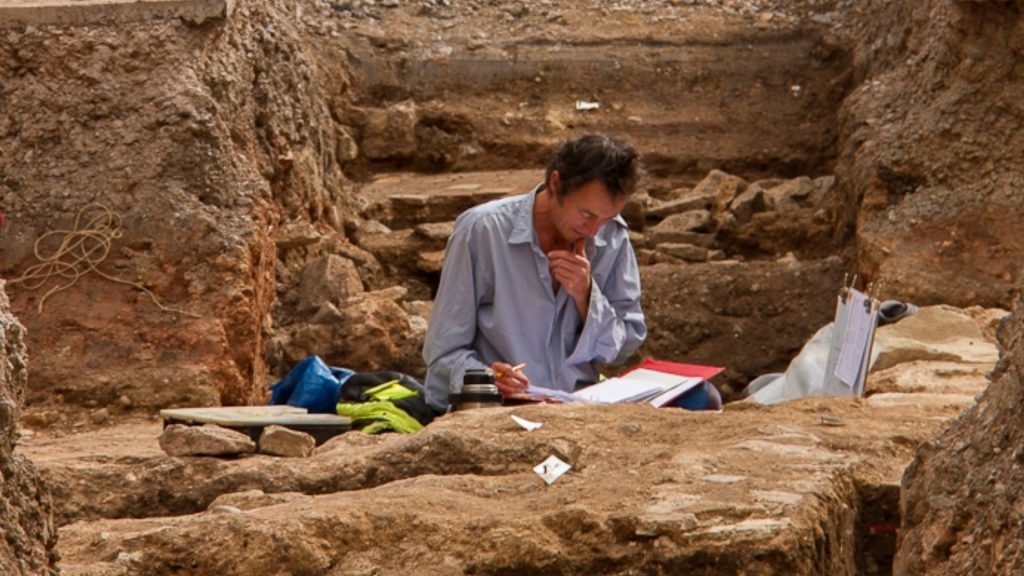
The tale continues to explain that King Richard III crossed the Bow Bridge on his way into battle and his spur nicked one of the stones that formed the bridge’s support. After his death, the King’s body was draped over the back of a horse and carried away. As the horse crossed the Bow Bridge, however, Richard III’s head slammed into the same stone and his skull was split open. There are plenty of skeptics who dismiss this story as mere legend, but it is interesting to note that psychic abilities may have played a role in the discovery of King Richard III’s lost grave.
So, What Happened to King Richard III’s Body After His Death?
There are a few accounts of King Richard III’s body being unceremoniously dumped in the river after his death, but there is more textual evidence that tells us that his body was stripped naked and displayed in public for his haters to mock and jeer. Then, reportedly, Franciscan Monks from a convent, Greyfriar’s Priory, in Leicester buried the body in an unmarked grave. It didn’t stay unmarked for long.

Apparently, King Henry VI ordered a small pillar of stone to be erected to mark his gravesite a decade later. An inscription on the stone pillar read, “Here lies the body of Richard III, some time King of England.” Some 80 years later, the area was demolished, and the stone pillar was moved. By the 1800s, the final resting place of England’s most notorious king was completely forgotten. It took determination, old-fashioned detective work, and a psychic-like hunch to finally locate the long-lost remains of King Richard III … in an unlikely place.
The Search Is On
For centuries, no one seemed to care where King Richard III was buried. Fast forward to the late 1990s when Philippa Langley, a British writer and film producer, read the story of the life of King Richard III and became fascinated with this historical figure. She even started a new branch of The Richard III Society, a club that was originally founded in 1924 and is made up of people who dispute King Richard III’s unfavorable reputation and dismal place in English history.

The Psychic Connection, Part 2
In May 2004 Phillipa Langley paid a visit to Leicester with the intent of visiting several of the sites identified as possible burial locations. The area looks completely different than it looked in King Richard III’s day as old buildings have been torn down and new buildings, roads, and infrastructure have been added, such as parking lots.
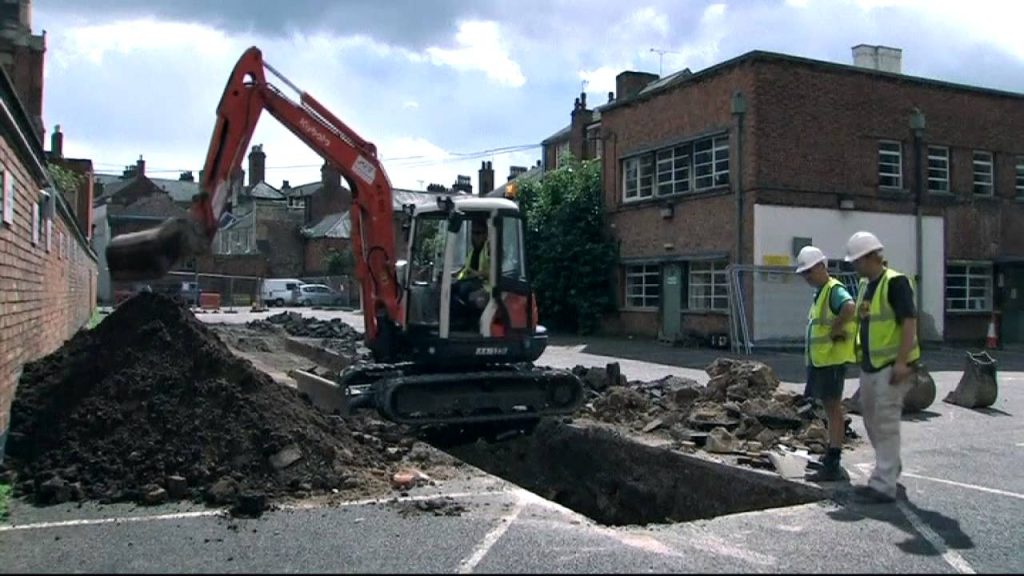
On the day of her visit, Phillipa Langley recalled her stops at other locations as being uneventful, but that changed when she walked across the northern part of the Social Services lot. An overwhelming feeling flooded Langley’s body. She believed she was walking over the interred body of King Richard III. She later stated, “I knew in my innermost being that Richard’s body lay there.” The following year, she made a return trip to that same parking lot. The strange sensation was even stronger this time. And she was what she took for her “X marks the spot” … someone had spray painted the letter “R” on the asphalt.
An Archaeological Dig in a Random Parking Lot
Armed with her thorough research, documentation, and her strange hunch, Phillipa Langley presented her findings to folks at the University of Leicester’s Department of Archaeology, as well as to the City Council of Leicester. They were more swayed by her historical research than her psychic hunch. They agreed to her request for the University to conduct a dig at the Social Services parking lot. The excavation was slated to take several days, but just six hours into the first day, they struck paydirt.

The team of archaeologists, with Phillipa Langley standing by, unearthed the skeletal remains of a man with a twisted spine and signs of battle wounds. Upon further analysis, it was determined that the bones dated back to the time of King Richard III and belonged to a man about his age.
DNA Tells the Rest of the Tale
Just because the bones had some physical anomalies that were consistent with King Richard III didn’t mean the archaeologists could definitively identify them as belonging to the long-lost King. Only science could offer the absolute proof Phillipa Langley and The Richard III Society was after.

DNA extracted from the bones was compared to the mitochondrial DNA of two known descendants of King Richard III’s sister, Anne of York, albeit descendants who were 17 and 19 generations removed from the notorious king. The results took some time to process. Phillipa Langley … and all of England … anxiously awaited the findings.
King Richard III, Lost No More
On February 4, 2013, a full 527 years, five months, and 13 days after King Richard III’s death at the Battle of Bosworth Field, the University of Leicester announced that his final resting place was lost no more. The discovery of his lost grave gave The Richard III Society the opportunity to correct the aspects of Richard III’s story that history got wrong and to educate a whole new generation about this small moment in English history.
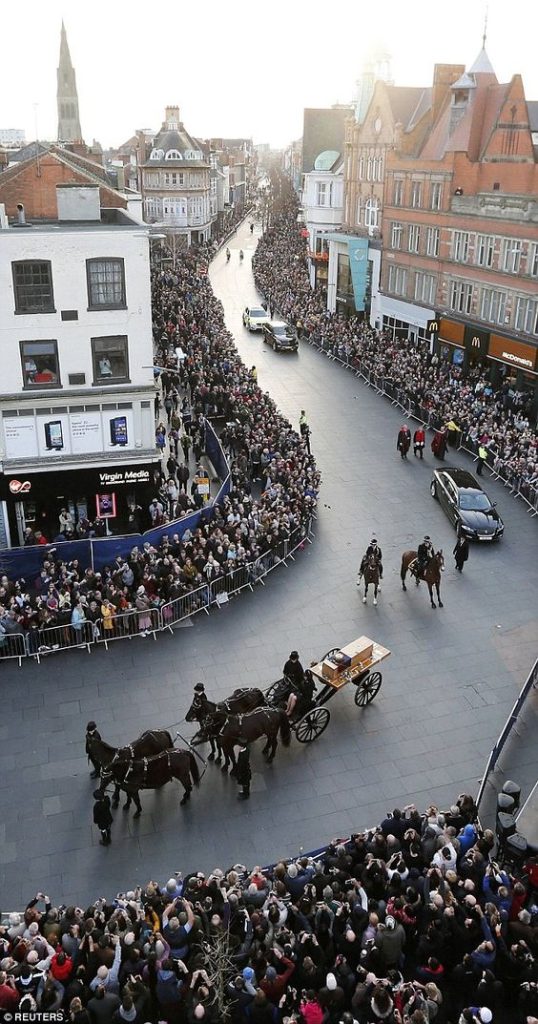
Beneath a parking lot is not a fitting resting place of a former king of England. On March 26, 2015, England reburied King Richard III at Leicester Cathedral in a televised memorial service that included all the pomp and pageantry deserving a king. The Archbishop of Canterbury presided over the event and the late Queen Elizabeth II was in attendance.
History Still Has Stories to Tell
The rediscovery of the lost grave of King Richard III tells us that history still has plenty of stories of the past left to tell. It just takes the desire to hunt for the truth. While it might be easy to picture Phillipa Langley as a female Indiana Jones leading an action-packed expedition into the past, we should remember one of Jones’s most memorable lines from The Last Crusade, “70% of all archaeology is done in the library.”

By studying written accounts of the past and comparing information against old and new maps, Langley was able to put her finger on the most likely burial site of King Richard III. The rest of the discovery could, perhaps, be credited to Richard III himself for reaching out from the grave to tickle Langley’s spider senses and direct her dig.

